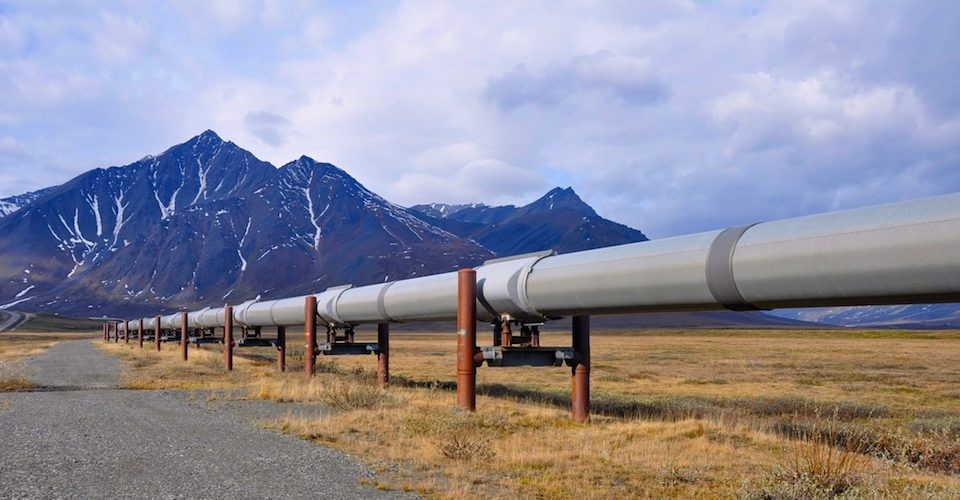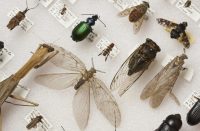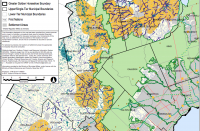Widespread public debate on building vast networks of snaking energy pipelines throughout Canada dominated the country’s environmental newsreel in 2014, and will continue making headlines in the year ahead.
Widespread public debate on building vast networks of snaking energy pipelines throughout Canada dominated the country’s environmental newsreel in 2014, and will continue making headlines in the year ahead.
A collection of Canada’s top environmental NGOs told A\J the climate change file – particularly an uptick in news stories, op-eds, consultations and street-level protests over whether and where oil and gas pipelines could be situated – was the environmental story of the year.
RELATED: A\J’s pipelines coverage
Devon Page, head of environmental legal group Ecojustice, said there has been more conversation and public interest in the fine print of pipeline projects, shifting climate patterns and the export of bitumen than he has ever seen before.
Pipelines have become stand-ins for Canadians’ larger concerns over the climate impacts of extracting, refining and exporting tar sands oil.
This past year, opposition to pipeline projects mounted out of fear the risks to community health were too large to ignore. While protests in British Columbia failed to halt oil giant Kinder Morgan’s bid to explore a proposed pipeline route through protected green space on Burnaby Mountain, the crush of litigation against energy resource projects has hammered home in the final days of 2014 the idea that social license to build pipelines from First Nations and the general public is no trivial or easily attained permit. And without it, no project is likely to advance beyond the drawing board.
Pipelines – from Enbridge’s long-opposed Northern Gateway in BC and Line 9 reversal in Ontario; to TransCanada’s Energy East, stretching some 4,400 kilometres from Alberta to refineries in Quebec and New Brunswick; to Kinder Morgan’s Trans Mountain project in Burnaby – have become stand-ins for Canadians’ larger concerns over the climate impacts of extracting, refining and exporting tar sands oil.
That’s according to Tim Grey, head of Toronto-based ENGO Environmental Defence. He told A\J the growing rancour between the public and government over the lack of transparency on energy projects will factor into the next federal election, slated for October 2015.
But the shift in collective attitude has already led to political change on the climate file. In Ontario and Quebec, community concern over the $12-billion Energy East project, slated to pump 1.1 million barrels of oil daily to eastern refineries, has led to numerous government reviews of the project. Ontario Premier Kathleen Wynne, embroiled in a lengthy war of words with Prime Minister Stephen Harper over everything from fiscal transfers to mining infrastructure, modified the Ministry of the Environment portfolio to include Climate Change. She also put an outspoken MPP from Toronto, former Winnipeg Mayor Glen Murray, at the helm. The first discussion paper on Ontario’s climate response is expected in early January 2015.
Beyond swelling opposition to energy projects, Anne Bell from Ontario Nature told A\J 2014 was a good year in Ontario for taking action to protect pollinators catastrophically affected by neonicotinoids, a class of synthetic pesticide. Declining bee populations risk the economic viability of $897-million worth of apples, cherries, peaches, plums and many other field crops that make up Ontario’s $6.7-billion agricultural sector.
Neonics are believed to be responsible for up to 70 per cent of bee deaths in recent years, leading to a mortality rate nearly two-and-a-half times sustainable levels. In November, Premier Wynne vowed to reduce the harmful effects of neonic use on honey bees by 80 percent by 2017, an ambitious target.
Anna Baggio from Wildlands League told A\J the plight of the country’s endangered beluga whales, woodland caribou, American eels and other at-risk species is a crucial story worth watching in the year ahead. “Their situations are not improving and governments aren’t doing enough,” Baggio said.
Ontario Nature and the Wildlands League hired Ecojustice to lead a lawsuit against the Wynne government, filed in September 2013. They argue a July 2013 change to the Endangered Species Act made it easier for industry operating in the province to acquire exemptions from the Act which forbade the killing, harming or harassing of species-at-risk and their habitat. A decision in that court case is expected next year.
Yet whether it’s endangered species, a broken environmental assessment process, resource pipelines or dying pollinators, the environmental challenges of 2014 will remain our problems to solve into 2015 and beyond. And far from isolated affairs, the cumulative strains on our air, our land, our water and our atmosphere interact in ways we’re only beginning to understand. “Our systems aren’t designed to respond to cumulative pressures,” stressed Baggio, “and they need to be.”
The routinely held belief in government acting in the best interest of its citizens, rather than those of resource companies, is beginning to erode.
But far from giving up, Canadians appear to be becoming more deeply engaged. The routinely held belief in government acting in the best interest of its citizens, rather than those of resource companies, is beginning to erode, according to Page from Ecojustice.
The pace of ground-level change may be slower, however, but Canadian’s attitudes are on a trajectory toward halting the kinds of energy projects the federal government and pipeline purveyors once thought foolproof. And in the process, this shift is reaffirming an environmental consciousness needed to keep governments transparent, industry honest and our shared environment as healthy as we can manage together.
Check out A\J’s top stories of 2014 – and keep an eye out for the story of neonics in Ontario from Anne Bell in A\J’s April Health issue.
Andrew Reeves is the Editor-in-Chief of Alternatives Journal. Overrun, his book about Asian carp in North America, will be published in Spring 2019 by ECW Press. His work has also appeared in the Globe & Mail, Spacing and Corporate Knights. Follow him on Twitter.













